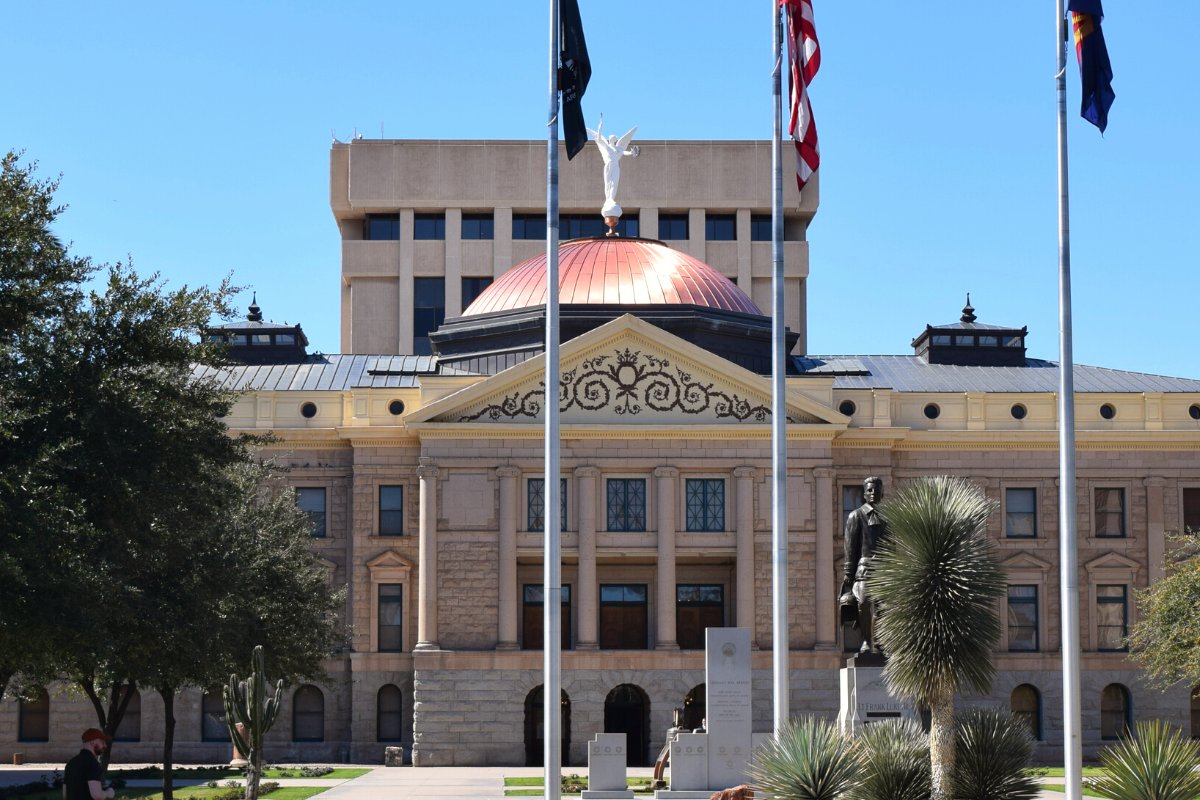
Bipartisan Budget Passes With Education Wins and Trade-Offs
The state budget, approved by both chambers of the legislature this week, demonstrates that bi-partisan (even intra-party) negotiation is achievable. The budget also provides several increases in education and related issues, including housing, infrastructure, and children’s health insurance, that together represent the potential for overall improvements in education—and the quality of life—for Arizona students.
Congratulations to the Governor and the Arizona State Legislature on reaching this agreement. We are pleased to see that it supports several education priorities that we champion. Arizona has everything to gain by investing in education, including billions in economic impact, if we increase educational attainment. Our economy, our workforce, our communities and individuals all gain when more students continue their education after high school—and our state’s budget is a critical part of making it happen.
This budget has many investments that move us in the right direction; however, there are also opportunities for additional investments to help us reach our Arizona Education Progress Meter Goals, including the state’s Achieve60AZ attainment goal.
The budget, which Governor Hobbs reports she will sign, includes several potentially high-impact items that Education Forward Arizona advocated for this year. As passed, the new budget:
- Provides $15.5 million for dual enrollment. This budget provides funding to reimburse dual enrollment students and provides a one-time stipend to teachers certified to teach dual enrollment, resulting in a win for Arizona students. According to research by Helios Education Foundation and the ASU Helios Decision Center for Educational Equity, high school students who participate in dual enrollment are more than twice as likely to attend college, stay enrolled, earn high GPAs, and graduate with a degree.
- Expands the Arizona Promise Program. The budget adds $20 million to the Promise Program for a total of $40 million, helping to fill the gap between the cost of a low-income student’s tuition and fees and any scholarship or grant money they receive. This new investment will serve approximately 5,000 students and is a good start on a long-overdue investment by the state to help make college more affordable and accessible for all Arizona students.
- Provides additional flexible funding for K-12 education. The budget includes more than $340 million for school facilities; a one-time K-12 infusion of $300 million plus more than $88 million in new ongoing K-12 funding; and more than $85 million in funding for Arizona universities. Elimination of results-based funding frees up another $68.8 million.
- Strengthens the Arizona Education and Career Action Plan (ECAP) and launches Early Education and Career Exploration Program. This program, a priority cited in Education Forward Arizona’s action plan for reaching the state’s Achieve60AZ attainment goal, reinforces the importance of the Arizona Education and Career Action Plan (ECAP) in setting students up for long-term success. The ECAP provides career-mapping tools that support college and career planning for all students, which Education Forward Arizona regards as an essential step to ensuring education and training opportunities beyond high school.
- Requires basic reporting on usage of Empowerment Scholarship Accounts (ESAs). The Arizona Department of Education will be required to report each quarter on specified metrics related to the Empowerment Scholarship Account (ESA) program, including the number of ESA students in each eligibility category, previous public school attendance, grade level, the number of English language learners, the number of students with a disability, and zip code of permanent residence. The report would also include the annual award amount associated with each ESA account and approved ESA expenses by type of expense.
While the budget, as passed, marks some clear wins in education spending and commitments, the trade-offs are serious. We applaud the one-time override that exempts K-12 funding from the aggregate spending cap next year, a reprieve from the waivers on the limit needed for the past two years. Still, because the spending cap is part of the state’s constitution, further action from the legislature is needed to refer the issue to the 2024 ballot, where voters can approve an essential long-term K-12 solution. A solution is also needed for addressing the community college expenditure limit.
More concerning still, the lack of a cap on the universal ESA program is enough, in itself, to potentially erase the funding gains passed this year. An honest analysis must be made about the financial viability of this spiraling program, or those who believe the intended goal is to systematically de-fund public education will continue to gain traction. The Joint Legislative Budget Committee projects the ESA program to cost the state $425 million as universal enrollment continues to soar. The estimate accounts for 55,180 enrollees. As of May 1, nearly 54,000 students already are enrolled in the ESA program. As the limit on individual vouchers grows to $10,000, the budget’s increased reporting requirements were essential for accountability and a welcomed requirement.
Next Steps
Overall, this year’s budget demonstrates several steps in the right direction to improving education outcomes and opportunities for Arizona students. However, voters need to remain vigilant to ensure that long-term commitments to public education are secured and efforts to defund public schools are checked. Education Forward Arizona is committed to both.
Join us as we continue to advocate for the following:
- Continued expansion of the Arizona College Promise Program
- Increased accountability, transparency, and cost control of the Empowerment Scholarship Account Program
- A permanent solution for the K-12 Aggregate Expenditure Limit and Community College Expenditure Limit
- Additional funding for Arizona’s community colleges
- Additional funding for Arizona’s public universities in order to limit tuition increases
Become an Education Forward Advocate to learn more about these issues and how you can help.
